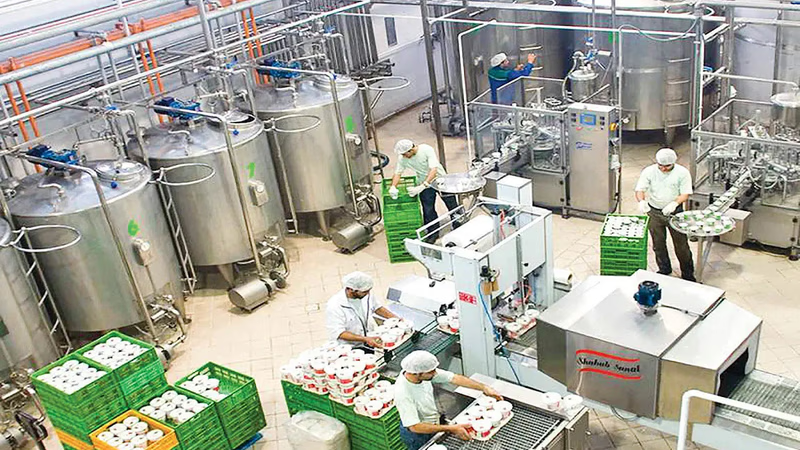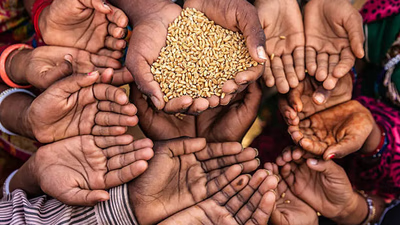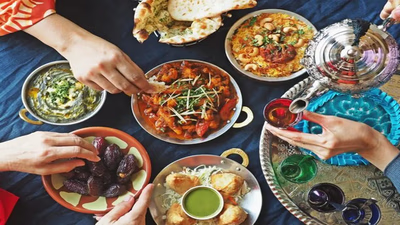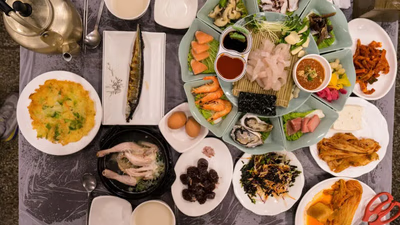
Modern food production and packaging in West Asia"s trade market."
West Asian countries have embraced modern agricultural practices to improve food production. This includes the use of advanced irrigation systems, hydroponics, vertical farming, and greenhouse cultivation. These technologies help optimize water usage, control environmental conditions, and increase crop yields, especially in arid and desert regions. There is an increasing interest in organic farming practices in the Middle East. Organic agriculture aims to minimize the use of synthetic inputs, such as pesticides and fertilizers, and focuses on sustainable farming methods. Organic farms and certifications are gaining popularity, driven by a growing demand for healthier and environmentally friendly produce.
To enhance food safety and consumer confidence, some Middle Eastern countries are implementing traceability systems. These systems enable tracking and documentation of food products throughout the supply chain, from farm to fork. They help identify the origin of ingredients, monitor quality, and facilitate recalls if necessary. The Middle East has witnessed a rise in food technology startups and innovation hubs focused on transforming the food industry. These startups are leveraging technologies like artificial intelligence, blockchain, and data analytics to improve food production, distribution, and traceability.
In addition to the general conditions governing the packaging industry, the packaging of food products has its own special conditions. The food packaging industry is widespread not only in the Middle East but also in the whole world, and it is one of the industries that the modern lifestyle needs a lot. These days, production lines seek to use more modern devices and eliminate human intervention in the production process. The future of production without the intervention of human hands is very popular. It means that the less the involvement of human forces in the production of a product, the more fans it will attract.
The food industry includes all active sectors in the production of food for human consumption. The food industry is a complex and global network of diverse businesses that provide most of the food consumed by the world's population. More than five billion liters of drinking water, milk, fruit juice and other liquid foods are consumed in the world every day. The packaging label and storage method play an important role in maintaining the quality of these products. In fact, healthy food should be packaged and provided to consumers without the need to add preservatives or keep it in the refrigerator.
Today, the food industry is diverse and full of specialized machines. It is one of the oldest industries, but it is still full of innovation. From new products to production techniques with higher volume and lower cost, food industry companies are always looking for new ways to produce the food that consumers want at the best possible price. In general, there are critical equipment in the food and beverage factory at every stage. From simple ovens and conveyor belts to complex bottling and packaging machines, the food and beverage industry and all types of food production lines depend on industrial-scale food production equipment.
Governments and regulatory bodies in the region have been working to enhance food safety and quality standards. This includes implementing strict regulations on food handling, processing, and labeling to ensure consumer protection. Many countries have established food testing laboratories and inspection systems to monitor compliance with these standards. The Middle East has witnessed a growth in the food processing industry, with an emphasis on adding value to agricultural products. Food companies are investing in technologies for processing, packaging, and preserving food items. This includes the development of ready-to-eat meals, canned goods, frozen products, and convenience foods to cater to changing consumer lifestyles.
Packaging plays a crucial role in preserving food quality, extending shelf life, and ensuring safety. West Asian countries have adopted modern packaging techniques, such as modified atmosphere packaging (MAP) and vacuum sealing, to maintain freshness and prevent spoilage. Additionally, there is an increasing focus on sustainable and eco-friendly packaging materials to reduce environmental impact. The establishment of a robust cold chain infrastructure is essential for maintaining the quality and safety of perishable food items. West Asian countries have been investing in cold storage facilities, refrigerated transportation, and logistics networks to preserve the freshness of agricultural produce, dairy products, and seafood.
-

West Asian countries are advancing their food production through modern agricultural practices, including advanced irrigation, hydroponics, and greenhouse cultivation. These methods optimize water use and increase crop yields, particularly in arid regions. The region is also seeing a rise in organic farming, driven by consumer demand for healthier options and sustainable practices. To enhance food safety, traceability systems are being implemented, allowing for the tracking of food products from farm to consumer. The growth of food technology startups is transforming the industry, utilizing AI, blockchain, and data analytics for improved production and distribution. The food packaging industry is evolving, focusing on modern devices to reduce human intervention and enhance efficiency. With a diverse food industry that includes sectors from dairy to snacks, the emphasis on quality packaging and storage methods is crucial for maintaining product integrity. Governments are enforcing stricter food safety regulations, while investments in food processing technologies are increasing.
This includes the development of ready-to-eat meals and convenience foods to meet changing consumer lifestyles. Sustainable packaging solutions are gaining traction, with techniques like modified atmosphere packaging being adopted to prolong shelf life. Additionally, robust cold chain infrastructures are being established to ensure the quality of perishable goods, reflecting a commitment to food safety and quality in the region.
-

Water scarcity is a pressing issue in the Middle East, impacting agricultural productivity and food security. Countries in the region are increasingly reliant on food imports to satisfy domestic needs, leading to vulnerabilities in the face of global price fluctuations and supply chain disruptions, as highlighted during the COVID-19 pandemic. Innovative solutions such as water desalination and drip irrigation are being implemented to mitigate water scarcity. The food industry plays a crucial role in employment and economic value creation in West Asia, with potential for growth due to favorable agricultural conditions and access to quality raw materials. However, ongoing conflicts, such as the war in Syria and the Ukraine crisis, exacerbate food insecurity by disrupting grain supplies and increasing prices. Malnutrition and dietary challenges persist, driven by lifestyle changes and economic factors. Climate change poses additional risks, affecting agricultural productivity and livestock rearing. Addressing food waste is also critical, as significant losses occur throughout the supply chain. Overall, enhancing local agricultural production, diversifying food sources, and implementing sustainable practices are vital for improving food security in the Middle East.
-

Halal food, essential in Middle Eastern cuisine, adheres to Islamic dietary laws, prohibiting pork and alcohol while emphasizing specific preparation methods. Staples like rice, wheat, and legumes form the foundation of many dishes, complemented by flatbreads such as pita and naan. Hospitality is paramount, often showcased through communal meals featuring roasted meats. The cuisine is characterized by grilling, roasting, and slow cooking, with popular dishes including shawarma and kebabs. Middle Eastern food is renowned for its freshness, health benefits, and aromatic qualities, leading to a global interest in its recipes. Mezze, a style of dining with small shared plates, highlights various dips and appetizers. Spices like cumin and cardamom, alongside herbs such as parsley and mint, enhance the flavors of lamb, chicken, and beef dishes. Desserts like baklava and kunefe showcase the region"s rich culinary traditions.
Coffee and tea play significant roles in social interactions, with traditional preparation methods reflecting the region"s hospitality culture. The global appeal of Middle Eastern cuisine continues to grow, driven by its unique flavors and health-conscious ingredients.
-

Asian cuisine is characterized by its diversity and bold flavors, with rice and noodles as staples across many countries. Fresh, seasonal ingredients play a vital role, enhancing both taste and nutritional value. Cooking techniques like stir-frying preserve the texture and nutrients of food. The Asian food market is rapidly expanding, projected to double to over $8 trillion by 2030, driven by a growing middle class and increasing consumer spending. The return of restaurant dining post-pandemic has further fueled this growth. Countries like Japan and Thailand are seeing a rise in food enthusiasts, impacting the global food industry. Street food culture is integral, showcasing local flavors and offering diverse options. Each region has unique culinary traditions, with common elements such as the use of various condiments and spices.
As consumer health awareness rises, there is a shift towards plant-based alternatives, particularly in markets like Singapore, Japan, and China. The food industry in Asia, especially in basic products and seasonings, significantly contributes to the region"s economic prosperity."
-

West Asia faces significant challenges in food production due to arid climates, limited water resources, and urbanization, which restrict agricultural activities. The region"s reliance on food imports makes it vulnerable to global price fluctuations and trade disruptions. Climate change exacerbates these issues, leading to crop failures and livestock losses. Political instability further complicates the situation, disrupting supply chains and causing food shortages. The ongoing conflict in several Middle Eastern countries has led to high food prices and increased food insecurity. The region"s growing population and shifting dietary preferences towards resource-intensive foods heighten the demand for a diverse and sustainable food production system. Inadequate infrastructure and post-harvest management contribute to significant food waste, compounding the challenges of ensuring food security. As countries like Morocco leverage their fertilizer production capabilities, there is a pressing need for effective monitoring of food supply chains and strategic regulation to support local producers and meet consumer needs.
The food industry, while essential, faces pressures that often compromise product quality. Companies like Poya Vision prioritize health and quality in food imports, highlighting the importance of sustainable practices in addressing the region"s food security challenges."
-

Asian food manufacturers produce a wide range of products, including snacks, beverages, and processed foods, reflecting the diverse cuisines of the region. They blend traditional recipes with modern technology to ensure authenticity while meeting contemporary demands for convenience and quality. These manufacturers adhere to strict quality and safety standards, following local regulations and global certifications like ISO and HACCP. With advanced production facilities and a strong export-oriented approach, they cater to both domestic and international markets. Many engage in private label and contract manufacturing, allowing them to customize products for retailers and food service providers. Sustainability and traceability are increasingly prioritized, with manufacturers adopting eco-friendly practices and implementing systems to ensure product authenticity. Research and development play a crucial role in introducing innovative products that align with evolving consumer preferences. Notable companies like Mitsubishi and Tsing Tao lead the industry, showcasing the prominence of Asian food brands globally. Overall, the Asian food manufacturing sector is a dynamic and growing hub, contributing significantly to the global food supply.






